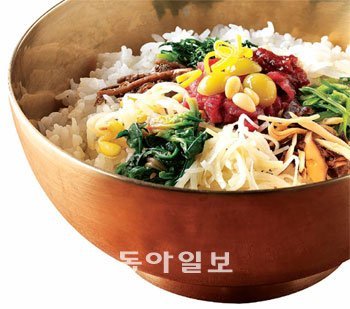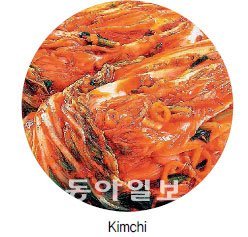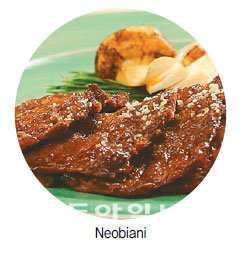
G20 summit goers will only get a chance to scratch the surface of a national cuisine that offers a tremendous range of regional and seasonal dishes, and which is influenced by the foods of the peasantry, the Buddhist priesthood and the nobility and royalty. But they may well find what they do try to their liking.
At the welcoming dinner for G20 leaders, two classic dishes, set off with Korea’s famous/notorious condiment, will be served. They are: Jeonju bibimbap; galbi; and, of course, kimchi, the fiery little pickle without which no Korean meal is complete.
All are vigorously stirred together before eating.

While bibimbap can be a simple dish - it is a popular meal on airlines, for example- the most famous,most regal style hails from the southwestern town of Jeonju. This, naturally, is what will be served at the G20.

It would be extraordinary if Korean cuisine’s most famous and ubiquitous element, was not served to the G20 leaders.
Kimchi is one of the few Korean words that is understood internationally, indicating its centrality to the nation’s table. A fermented condiment, usually (but not always) spiced, it was traditionally stored in huge earthenware jars to tide families over with vitamins for the long winters.

The best way to sample kimchi is to load a pair of chopsticks with not just the pickle but also rice, meat and other ingredients, rather than eating it independently.
When it comes to dining customs, Korean meals are ususally served on the table all at once, but some restaurants today serve meals in courses.

While basic barley teas are served in most restaurants, Koreans love a tipple and the nation is home to a wide range of alcoholic beverages. The most common are soju, a vodka-like grain spirit; makgeolli, a milky white rice brew; and various neo-traditional sweet fruit and herbal wines which have gained popularity in recent years. Western-style beers and wines are also served widely.
While it may not be apparent to the casual diner, Korean food is based on a complex philosophy linking the colors of the ingredients with flavors, elements and even directions.
This philosophy is governed by obangsaek, Korea’s traditional five colors:yellow, blue/green, white, red and black. Each color symbolizes a particular flavor and element: black (water), red (fire), blue/green (wood), white (metal) and yellow (earth). These represent salty, bitter, sour, spicy and sweet flavors, respectively. The colors also represent east, west, south, north and center, the five different energies and directions of the universe.

Korean food has long been prepared and consumed for medicinal purposes. Applying obangsaek to Korean food balances all elements of yin and yang energy in a bowl or in a dish.
Fermented ingredients and dishes take a prominent place in the Korean larder.
While the western world also consumes fermented foods in the form of cheese and yogurt, the number of fermented dishes in Korea is overwhelming.
While there are 246 varieties of French cheese, kimchi comes in 336 variations. Furthermore, there are about 160 kinds of pickled vegetables, 170 types of salted seafood and 130 types of jang (fermented paste). This formidable cornucopia is washed down with 370 different fermented alcoholic drinks.
Tableware reflects Korea’s traditional culture. In the 2005 APEC summit, porcelain engraved with traditional patterns such as the 10 symbols of longevity was used as tableware. At other high-profile events, Korea’s famed celadon porcelain has been showcased.
The global attention being lavished upon Korea during the G20 summit is bringing hope to those who wish to bring the East’s last undiscovered cuisine to the attention of a wider audience than it has ever enjoyed in the past.
“Korean food is a healthy food characterized by vegetarian dishes, fermented foods and fresh seasonal ingredients,” said Dr. Yoon Sook-ja, who heads the Institute of Traditional Korean Food.“The G20 Summit can serve as an opportunity to let the heads of state and first ladies know the true beauty and taste of Korean food, thereby leaving a good impression of Korean culture.”
By Lee Sae-saem
iamsam@donga.com
-
- 좋아요
- 0개
-
- 슬퍼요
- 0개
-
- 화나요
- 0개
-
- 추천해요
- 개
지금 뜨는 뉴스
-

접점 못찾은 135분… 민주, 채 상병 특검법 등 내달 단독처리 할듯
- 좋아요 개
- 코멘트 개
-

6·25 포탄 파편 박힌채 73년… 美 노병 훈장 받는다
- 좋아요 개
- 코멘트 개
-

“심장혈관 스텐트 시술 수가 최대 2배로”
- 좋아요 개
- 코멘트 개
댓글 0